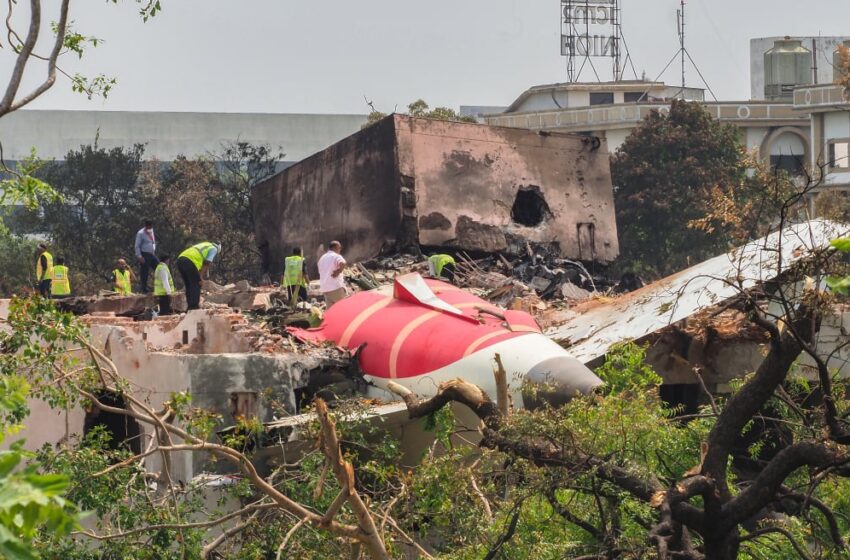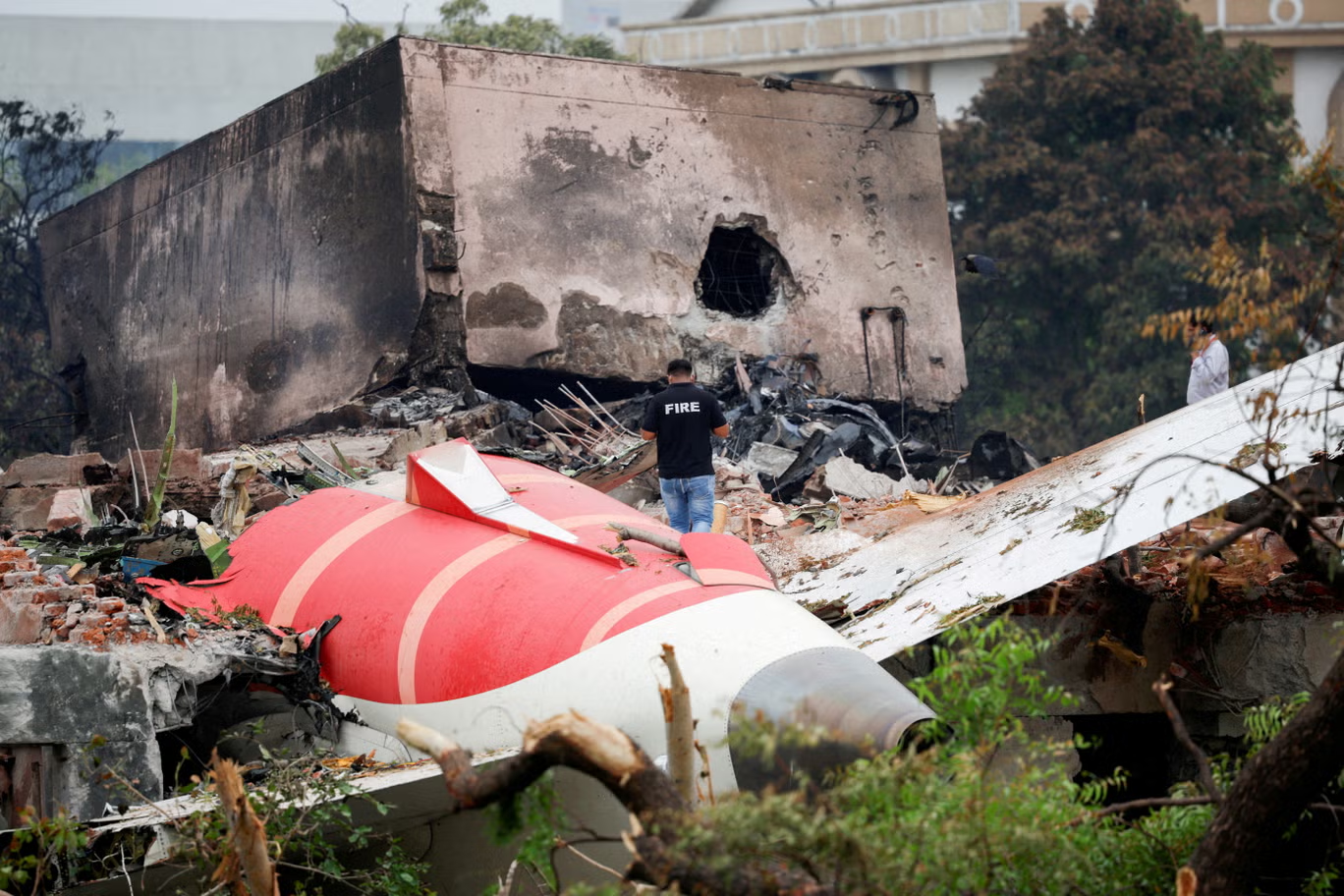Air India Boeing 787 crash: What we know so far

An investigation team inspects the wreckage of Air India flight 171 a day after it crashed. Photo: AFP/ Sam Panthaky
On June 12, 2025, Air India Flight 171, a Boeing 787-8 Dreamliner, tragically crashed shortly after takeoff from Ahmedabad en route to Dubai. The devastating incident claimed the lives of 241 passengers and crew members, along with at least 19 people on the ground. Miraculously, one passenger survived. The aircraft was over 12 years old and powered by General Electric’s GEnx engines. This incident has raised global concerns about aircraft safety and has prompted a large-scale investigation involving both Indian and international aviation authorities.
Black Boxes Successfully Recovered
Just days after the crash, investigators recovered both the cockpit voice recorder (CVR) and the flight data recorder (FDR) from the wreckage. Commonly known as black boxes, these devices are designed to survive severe impacts and store crucial data. The CVR captures cockpit conversations and ambient sounds for up to 25 hours, while the FDR records more than 88 flight parameters. These recordings are now being analyzed at the Aircraft Accident Investigation Bureau (AAIB) in New Delhi, with assistance from the U.S. National Transportation Safety Board (NTSB). The goal is to reconstruct the final moments of the flight and identify the root cause of the crash.
Deployment of Ram Air Turbine Suggests Power Loss
One of the most telling early clues was the deployment of the ram air turbine (RAT), a backup power system that activates automatically when both engines fail. This indicates that the aircraft may have experienced a sudden dual-engine power loss. Such a scenario is extremely rare and has led investigators to consider a range of possibilities, including simultaneous engine failure, fuel system contamination, electrical malfunction, or even sabotage. While nothing has been ruled out, the RAT deployment strongly suggests a total loss of power that left the aircraft vulnerable shortly after takeoff.
Read Also: Investigators analyzing Air India plane crash…here’s the latest update
Boeing and GE Face Market Reactions
The crash had immediate financial repercussions for Boeing. The company’s stock dropped by over 7%, continuing a downward trend driven by ongoing safety concerns and production delays. Meanwhile, GE Aerospace—the manufacturer of the GEnx engines—saw its stock rise slightly by around 2%. This increase may reflect investor confidence in the company’s transparency and rapid response following the incident. Both companies are under intense scrutiny as the investigation unfolds, and future findings could impact their reputations and operations further.
India Orders Nationwide Safety Inspections
In response to the tragedy, India’s aviation authorities ordered comprehensive inspections of all 33 Boeing 787 Dreamliners currently in operation within the country. While no major faults were discovered, the inspections underscore a broader concern about aircraft maintenance standards and operational safety. Regulators and airlines alike are now paying closer attention to aircraft health monitoring systems, maintenance logs, and compliance with international aviation standards.
What Comes Next in the Investigation
The investigation will proceed in several phases. A preliminary report is expected within 90 days, providing initial insights based on black box data and physical evidence. However, a complete and detailed final report may take six to eight months, possibly longer, depending on the complexity of the findings. The final report will examine all factors, including mechanical systems, pilot actions, weather conditions, and air traffic communications. International collaboration between Indian authorities, the NTSB, Boeing, and GE Aerospace ensures that the investigation will be thorough and transparent. Until then, regulators and the public await answers that could reshape aviation policies and manufacturing protocols.
In Summary
The crash of Air India Flight 171 has become one of the most significant aviation disasters in recent history. As investigations continue, the aviation industry is once again reminded of the importance of safety, maintenance, and accountability. With black box analysis underway and international support involved, the hope is that clear answers will emerge soon. This tragedy may also lead to new safety measures that could prevent similar incidents in the future. For now, the world watches closely as investigators work to piece together the events that led to this heartbreaking loss.


